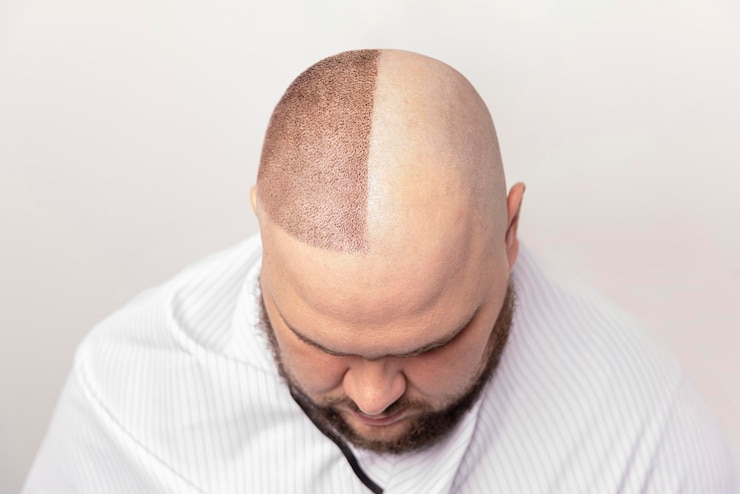Understanding the process of a FUE Hair Transplant in Abu Dhabi can help prospective patients feel more confident and prepared for their journey toward improved hair density. This procedure is a popular and minimally invasive hair restoration technique designed to restore natural hair growth by transplanting healthy hair follicles from a donor area to areas experiencing hair loss. In this comprehensive guide, we will explore step-by-step what happens during an FUE hair transplant session, emphasizing the procedure’s stages, patient experience, and what to expect throughout the process.
Preparation Before the FUE Hair Transplant Session
Initial Consultation and Evaluation
Before the actual transplant, patients typically undergo a thorough consultation with a qualified specialist. This stage involves evaluating the scalp’s condition, analyzing hair loss patterns, and determining the suitability of the FUE technique. The specialist assesses donor hair quality and density, discusses aesthetic goals, and explains the procedure in detail. This personalized approach ensures that expectations are aligned and that the treatment plan is tailored to individual needs.
Pre-Procedure Instructions
Patients are usually advised to follow specific pre-operative guidelines such as avoiding blood-thinning medications, alcohol, and smoking for a certain period before the session. Proper preparation minimizes complications and optimizes the outcome. Additionally, patients may be instructed to wash their hair thoroughly on the day of the procedure and arrive with clean scalp conditions.
The FUE Hair Transplant Procedure: Step-by-Step Breakdown
Step 1: Anesthesia Administration
The session begins with local anesthesia administered to the scalp. This numbs the donor and recipient areas, ensuring the patient experiences minimal discomfort during the procedure. The anesthesia is carefully applied to maintain patient comfort while allowing the specialist to work efficiently.
Step 2: Donor Area Preparation
Once anesthesia takes effect, the specialist prepares the donor region, typically located at the back or sides of the scalp. The area is shaved to facilitate precise follicle extraction and to maintain clarity during the procedure. The donor zone is carefully selected based on hair quality and density.
Step 3: Follicle Extraction Using the FUE Technique
The core of the procedure involves extracting individual hair follicles using a specialized micro-punch tool, usually measuring 0.6 to 1.0 millimeters in diameter. This minimally invasive method allows for the removal of follicular units with high precision, leaving tiny, almost invisible scars. The specialist carefully extracts healthy follicular units, ensuring the preservation of their integrity for transplantation.
Step 4: Preparation of Grafts for Transplantation
Extracted follicles are meticulously examined, sorted, and prepared for implantation. This step involves organizing the grafts based on their orientation, size, and number of hairs per follicle. Proper handling during this phase is crucial to maximize graft survival and achieve natural-looking results.
Step 5: Recipient Area Creation
In the recipient zone—areas experiencing thinning or baldness—the specialist creates tiny incisions or recipient sites. These incisions are strategically placed to mimic natural hair growth patterns, considering factors such as angle, direction, and density. Precision here influences the final aesthetic outcome.
Step 6: Graft Implantation
The prepared follicles are carefully implanted into the recipient sites using fine surgical tools. The specialist ensures that each follicle is positioned correctly to promote natural hair growth and coverage. This meticulous process requires a steady hand and keen eye for detail to ensure optimal placement.
Post-Procedure Care and Immediate Aftercare
Immediate Post-Transplant Experience
After completing the graft placement, the specialist may provide guidance on caring for the scalp. Patients might experience mild discomfort, swelling, or redness, which are typically temporary. The scalp is usually covered with a protective bandage or dressing, and detailed instructions are given on how to care for the area during the initial recovery phase.
Care Instructions and Follow-Up
Patients are advised to avoid strenuous activities, direct sunlight, and certain hair products for a specified period. Gentle washing protocols are explained to prevent dislodging grafts. Follow-up appointments are scheduled to monitor healing progress, address concerns, and assess graft survival.
The Healing Process and Expected Outcomes
Short-Term Healing
In the first few days, scabbing and crusting around the grafts may occur, which usually resolve within a week. Proper scalp hygiene, as instructed by the specialist, helps facilitate healing and minimizes infection risk.
Long-Term Results
Over the next several months, transplanted hair follicles enter a resting phase before gradually producing new hair. Visible hair growth typically begins around 3 to 4 months post-procedure, with full results evident after 9 to 12 months. The transplanted hair continues to grow naturally, blending seamlessly with existing hair.
Factors Influencing the Session and Final Results
Technique Precision and Graft Quality
The success of an FUE hair transplant heavily depends on the precision of follicle extraction and placement. Skilled practitioners ensure minimal trauma during extraction and accurate implantation, which directly affects graft survival and aesthetic outcome.
Patient’s Hair Characteristics
Hair texture, color, and scalp elasticity influence the overall result. Thicker, darker hair tends to provide better coverage, while scalp laxity affects the ease of follicle removal.
Post-Procedure Lifestyle and Care
Adhering to post-operative instructions, maintaining scalp hygiene, and avoiding damaging activities are vital for optimal healing and growth. Lifestyle factors such as nutrition and stress management also play a role in the success of hair restoration.
Conclusion: What to Expect During an FUE Hair Transplant Session
A FUE Hair Transplant Abu Dhabi involves several carefully executed stages, from anesthesia to follicle implantation. The procedure is designed to be minimally invasive, with a focus on precision and natural results. Patients should expect a step-by-step process that emphasizes comfort, meticulous handling of grafts, and detailed planning of hair placement. With proper preparation, skilled practitioners, and diligent post-care, individuals can look forward to achieving a fuller, natural hairline that enhances their confidence and appearance.
